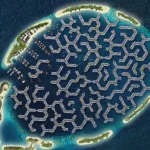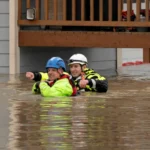In Maharashtra’s drought-stricken districts of Nashik and Nandurbar, 17-year-old Ramati Mangla begins her day barefoot, carrying a steel pot on a long trek to fetch water. “I have my books,” she says. “But what if I never get a chance to return to school?”
With wells drying up and rainfall becoming unpredictable, families in these areas face extreme hardships. Men often migrate to nearby cities for work, leaving girls like Mangla responsible for collecting water—a task that consumes hours each day, often at the cost of their education.
Local authorities estimate that nearly two million people in these districts experience daily water shortages. A 2021 UNESCO report highlighted that climate-related disruptions are increasingly forcing girls worldwide out of classrooms—a trend clearly visible in rural India.
Teachers report a sharp decline in girls’ attendance during dry months, while many families, struggling to survive, resort to keeping daughters home or arranging early marriages. UNICEF notes that children in drought-prone areas “struggle to attend school regularly as water collection now takes longer due to scarcity and pollution.”
For Mangla and countless other girls, the climate crisis has turned the simple act of fetching water into a stark choice between survival and education. Her story is featured in a photography series by Shefali Rafiq for the 2025 Marai Photo Grant, which highlights climate change’s impact on communities across South Asia.
The award, organized by Agence France-Presse in honor of the late Shah Marai, aims to celebrate young photographers who capture the daily struggles and resilience of their communities.
#ClimateChange #GirlsEducation #IndiaDrought #WaterCrisis #UNICEF #MaraiPhotoGrant #RuralIndia







